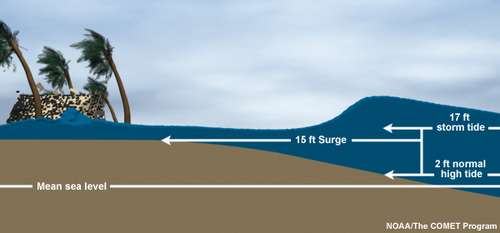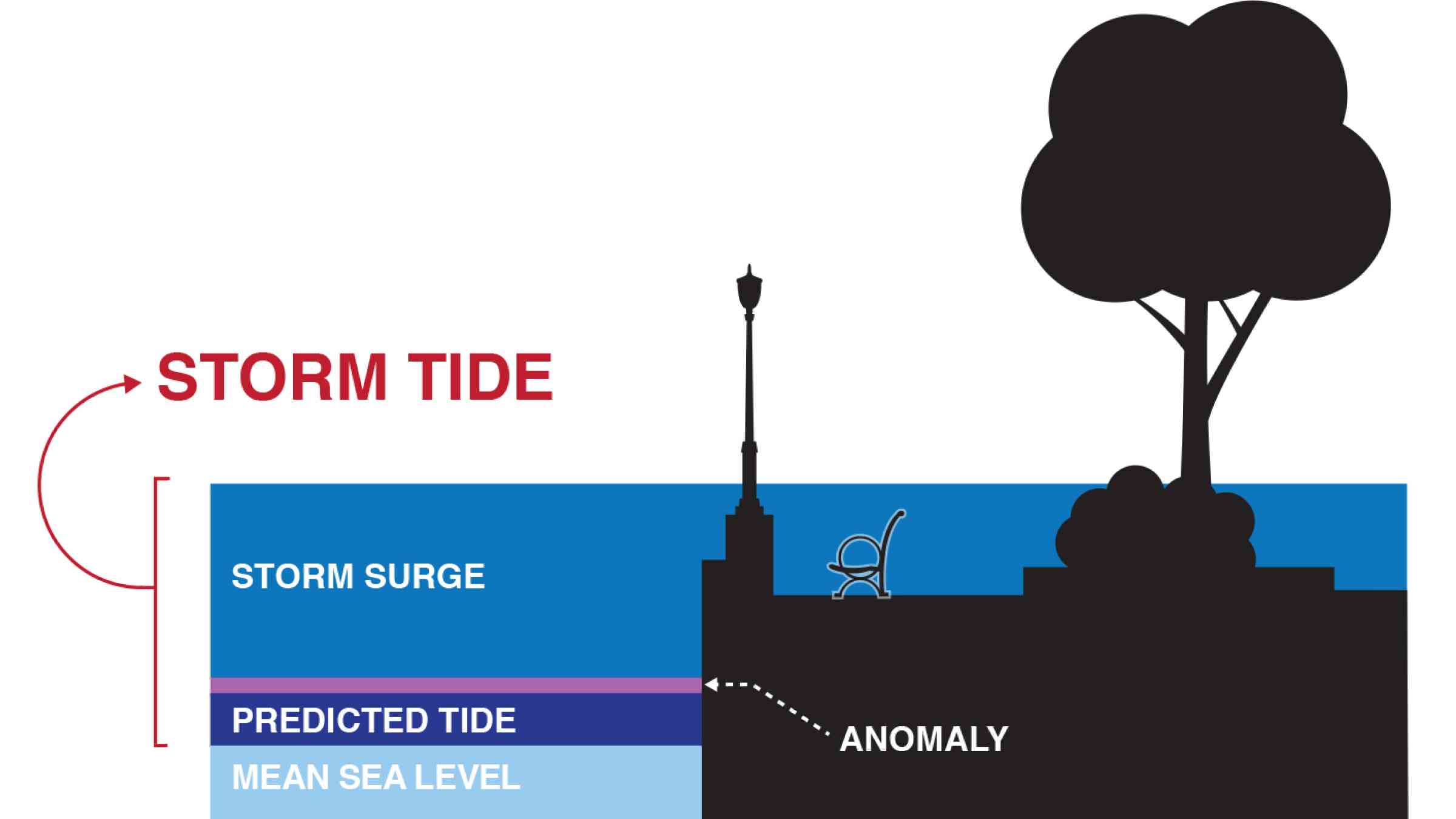Storm Tides
Primary reference(s)
WMO, 2017. Regional Association IV – Hurricane Operational Plan for North America, Central America and the Caribbean, WMO-No. 1163. World Meteorological Organization (WMO). Accessed 26 November 2019.
Additional scientific description
A storm tide is the water level that results from the combination of the normal (astronomical) tide and a storm surge (an abnormal rise of water generated by a storm, over and above the predicted astronomical tide) (NOAA, no date).
A 3-metre storm surge on top of a normal high tide that is 2 metres above mean sea level will produce a storm tide that is 5 metres above mean sea level (NOAA, no date).
Storm surge should not be confused with storm tide (NOAA, no date).
This rise in water level associated with a storm tide can cause extreme flooding in coastal areas particularly when a storm surge coincides with a normal high tide, resulting in storm tides of up to 20 feet or more in some cases (NOAA, 2019a).
The components responsible for a storm tide are illustrated in the graphic below (NOAA, 2019b).

Metrics and numeric limits
Not available.
Key relevant UN convention / multilateral treaty
Not available.
Examples of drivers, outcomes and risk management
The worst impacts associated with storm tides occur when a storm surge arrives on top of a high tide. Under this scenario, the storm tide can reach inland areas that might otherwise have been unaffected. Added to this are pounding waves generated by the powerful winds. The area of sea water flooding may extend along the coast for 100 kilometres or more, with water pushing several kilometres inland if the land is low lying. The combined effects of the storm tide and waves can destroy buildings, wash away roads and run ships aground (Australian Government, 2020).
The example below illustrates water level differences for storm surge, storm tide, and a normal (predicted) high tide in relation to mean sea level. Storm tide is the total observed seawater level during a storm, which is the combination of storm surge (the rise in seawater level caused solely by a storm) and normal high tide (NOAA, 2019b).

References
Australian Government, 2020. Storm Surge. Bureau of Meteorology. Accessed 26 November 2019.
NOAA (no date). Storm Surge (Overview). Accessed 15 April 2021.
NOAA, 2019a. Storm Surge Overview. National Hurricane Center and Central Pacific Hurricane Center, National Oceanic and Atmospheric Administration (NOAA). Accessed 26 November 2019.
NOAA, 2019b. What is storm surge? National Ocean Service, National Oceanic and Atmospheric Administration (NOAA). Accessed 26 November 2019.